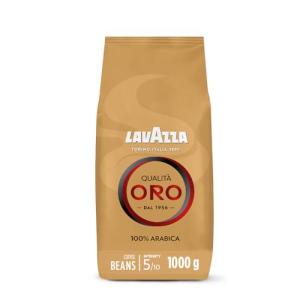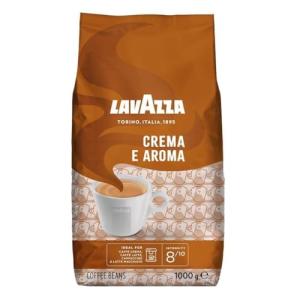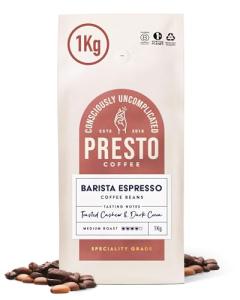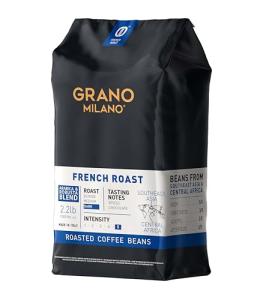Coffee lovers around the globe recognize that the type of coffee bean used plays a significant role in the final flavor profile of your cup. Among the myriad of options available, Light Roast 100% Arabica coffee beans are especially cherished for their vibrant flavors and aromatic qualities. In this guide, we'll explore the characteristics, benefits, and brewing tips related to light roast Arabica coffee, as well as provide answers to some frequently asked questions.
Understanding Light Roast Coffee
Light roast coffee is often celebrated for its bright acidity and pronounced flavors. The beans are roasted for a shorter period than their darker counterparts, allowing the natural characteristics of the Arabica bean to shine through.
Key Characteristics of Light Roast Arabica Coffee
| Characteristic | Description |
|---|---|
| Flavor Profile | Bright, fruity, floral, and acidic, with delicate sweetness |
| Caffeine Content | Generally higher in caffeine compared to darker roasts |
| Appearance | Light brown color, dry surface with no sheen of oils |
| Aroma | Vivid and complex aromas with hints of various fruits and spices |
| Acidity Level | High acidity, giving a crisp and refreshing taste |
Why Choose 100% Arabica Coffee Beans?
Choosing 100% Arabica coffee beans ensures that you are selecting high-quality beans known for their superior flavor. Arabica beans typically represent 60-70% of global coffee production, dominating the specialty coffee market. Here are some reasons why coffee enthusiasts prefer Arabica:
-
Flavor Complexity: Arabica beans are known for their diverse flavor profiles, showcasing a range of fruity, floral, and nutty notes.
-
Lower Bitterness: Compared to Robusta beans, Arabica has a lower bitterness, resulting in a smoother cup of coffee.
-
Acidity: The high acidity present in Arabica beans helps to enhance the coffee's brightness and overall taste.
-
Sustainable Producers: Many Arabica coffee farmers engage in sustainable and environmentally friendly farming practices, often leading to a higher quality product.
The Health Benefits of Light Roast 100% Arabica Coffee
Light roast Arabica coffee doesn't just taste good; it can also offer several health benefits. Here are a few notable ones:
-
Rich in Antioxidants: Light roast coffee contains a higher concentration of antioxidants than darker roasts, aiding in the reduction of cellular stress.
-
Enhanced Metabolism: The caffeine in coffee can improve metabolism and help in weight management.
-
Mental Alertness: With a caffeine boost, light roast coffee helps enhance mental clarity and overall cognitive function.
-
Nutrient-Rich: Coffee contains essential nutrients like B vitamins, potassium, and riboflavin.
How to Brew the Perfect Cup
Brewing light roast coffee can be an art, but with a few tips, anyone can appreciate the flavor nuances that 100% Arabica beans bring to the table. Here’s a step-by-step guide to brewing a delicious cup of light roast coffee:
-
Choose the Right Equipment: Use a drip coffee maker, pour-over, or a French press to highlight the flavors of light roast coffee.
-
Use Filters: If using a drip coffee maker or pour-over method, select high-quality filters to avoid any papery taste.
-
Milling: Grind your beans right before brewing to retain their freshness. For drip coffee or pour-over, aim for medium grind size; for French press, go coarser.
-
Water Temperature: The ideal water temperature for brewing light roast coffee is around 195°F to 205°F. This helps avoid over-extraction, which can lead to bitterness.
-
Coffee-to-Water Ratio: A good starting point is 1:16; for every gram of coffee, use 16 grams of water. Adjust according to your taste preference.
FAQs About Light Roast 100% Arabica Coffee Beans
Q: What makes light roast coffee different from dark roast?A: Light roast coffee is roasted for a shorter period, leading to a brighter, more acidic flavor profile. Dark roast coffee has bolder, more aromatic flavors with reduced acidity.
Q: How should I store my coffee beans?A: Coffee beans should be stored in an airtight container in a cool, dark place to maintain their freshness and flavor.
Q: Can I use light roast coffee for espresso?A: Yes, light roast coffee can be used for espresso, but it may yield different results compared to traditional dark roasts, often resulting in a milder flavor.
Q: Is light roast coffee lower in caffeine than dark roast?A: Surprisingly, light roasts often have a slightly higher caffeine content than dark roasts because the roasting process reduces caffeine.
Q: How long do coffee beans stay fresh?A: Coffee beans usually retain their optimal freshness for about 2-4 weeks after being roasted, provided they are stored properly.
Light Roast 100% Arabica coffee beans are an excellent choice for those who appreciate the nuanced flavors and bright acidity that a quality coffee can offer. With their multiple health benefits, gorgeous aromas, and vibrant taste profiles, it's no wonder that they have gained a fervent following among coffee aficionados.
Experimenting with brewing methods, exploring different flavor notes, and understanding the characteristics of these beans will enhance your experience and deepen your appreciation for this delightful beverage. Whether you’re starting your morning or seeking a mid-afternoon pick-me-up, light roast Arabica coffee beans are sure to brighten your day.






